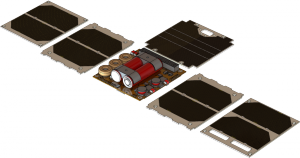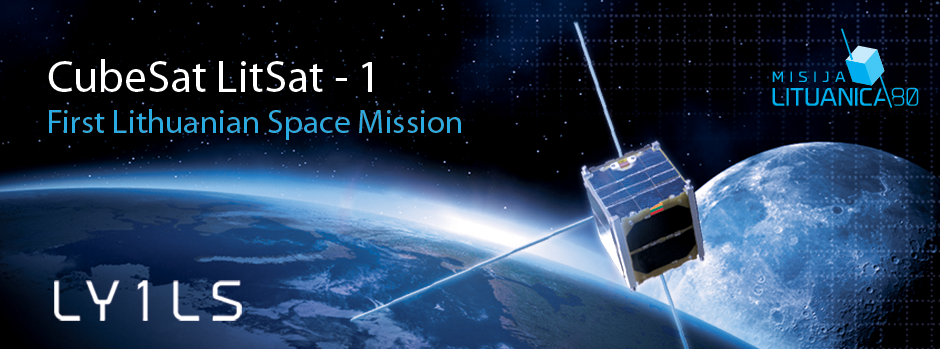In order to support the satellite LitSAt-1 functions, the satellite is equipped with energy budget monitoring and management system.
Tasks of the system:
- ensure a maximum energy intake from solar cells;
- analyse amounts of stored energy and allocate it to prioritized blocks;
- transmit information about the energy state of the satellite to the telemetry system.

Electrical energy is collected from five solar cells which are situated on five surfaces of the satellite. Since the satellite can flip and rotate in space, the arrangement of solar cells ensures that they practically receive solar power at any time despite the position of the satellite. Four solar cells are made of Gallium Arsenide (GaAs), and the fifth cell is made on the basis of Silicon (Si). The former cells are twice as effective as the latter. GaAs solar panel generates 2.5 W, while silicon based – 1.25 W. Due to the satellite surface limitations, the more effective solar cells were used. Silicon based solar cell was used in order to test Lithuanian solar cell performance in space. If Lithuanian solar cells and their design prove to be useful, they might enter the small satellite market.
The solar cells are connected to the power module input which ensures a maximum energy storage programme and optimal allocation of energy to the modules of the satellite.







